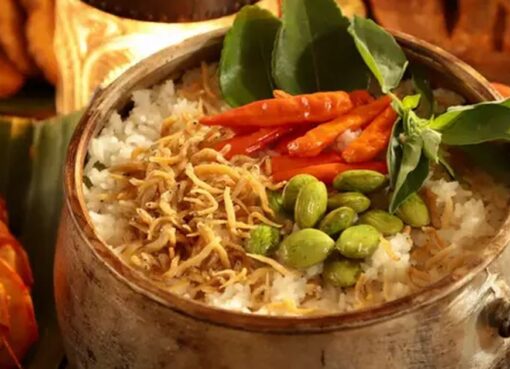Fabada Asturiana: More Than Just a Stew – A Culinary Journey Through Asturia

Contents
Fabada Asturiana, a traditional bean stew from the northern region of Asturias in Spain, is one of the country’s most celebrated dishes. Hearty, robust, and rich in flavor, this comforting stew has transcended its humble origins to become a national treasure, revered for its taste and cultural significance. To truly understand Fabada Asturiana, one must delve into its ingredients, preparation, history, and the role it plays in Asturian and Spanish culinary traditions. This article will explore the origins of Fabada Asturiana, its unique ingredients, its method of preparation, and its place in modern Spanish cuisine.
Origins and Historical Significance

The origins of Fabada Asturiana can be traced back to the rural communities of Asturias, a region known for its lush green mountains, rugged coastlines, and rich agricultural land. Historically, the dish was considered peasant food, as it was simple to make, used local ingredients, and provided substantial nutrition for the working class, particularly during the cold winter months.
Asturias is a region that has always prided itself on its ability to maintain traditional practices, and Fabada Asturiana is a reflection of that ethos. The dish likely evolved over centuries as farmers sought out hearty, calorie-dense meals that could sustain them through long days of labor. The use of beans, a crop that thrived in Asturias, alongside pork products, which were easily preserved through curing and smoking, was a practical choice that developed into a beloved culinary tradition patihtoto.
Some historians believe that Fabada’s origins could be even older, potentially dating back to Roman times or earlier, as evidence of stews made from beans and cured meats were common throughout Europe’s ancient history. However, the first documented mention of Fabada Asturiana as we know it today appears in the late 19th or early 20th century, coinciding with the industrial revolution in Spain when such traditional dishes became more widely popular outside rural areas.
The Ingredients: A Simple but Powerful Combination
The key to Fabada Asturiana lies in its simplicity. Though it consists of only a few ingredients, each plays a crucial role in creating the dish’s distinct flavor and hearty texture. The primary components include:
- Fabes: The star of the dish, these are large, white Asturian beans that are known for their buttery texture and ability to absorb the flavors of the stew. The beans are grown specifically in Asturias and are prized for their quality. While other varieties of beans can be used, authentic Fabada is made with fabes de la Granja, which are considered essential to achieving the right consistency and taste.
- Chorizo: A type of Spanish pork sausage seasoned with paprika, which gives it a distinctive smoky flavor and a red hue. Chorizo adds spice and depth to the dish, balancing out the richness of the beans and meat.
- Morcilla: Asturian black pudding, or blood sausage, which is rich and earthy, bringing a unique flavor to the stew. This ingredient is essential for adding complexity to the dish, providing a deep umami flavor that complements the beans and other meats.
- Lacón: This cured pork shoulder adds a fatty richness to the stew. The fat from the pork melts into the broth, creating a luxurious texture and contributing to the overall savory quality of the dish.
- Bacon (Panceta): In some variations, pieces of bacon are added to give the dish extra depth and a smoky undertone. The bacon, along with the other cured meats, adds to the rich and hearty profile of Fabada.
- Saffron: A small but essential component, saffron gives the stew its characteristic golden color and adds a subtle, aromatic flavor. While not always present in every version of the dish, many cooks swear by the addition of saffron to enhance the overall complexity.
The Preparation: Slow and Steady Wins the Race
One of the key characteristics of Fabada Asturiana is the slow-cooking process, which allows the flavors of the beans and meat to meld together. The dish is typically cooked in a large pot, with each stage contributing to its final flavor.
- Soaking the beans: The fabes are soaked overnight in cold water to soften them before cooking. This step ensures the beans will cook evenly and reach the desired texture. They need to be tender without falling apart, which is crucial to maintaining the stew’s hearty consistency.
- Simmering the meats: The chorizo, morcilla, lacón, and bacon are simmered with the beans in water, creating a broth that is rich and flavorful. The key here is patience; Fabada is a dish that cannot be rushed. The slow simmering process can take several hours, allowing the flavors of the meats to infuse the broth and the beans to absorb the essence of the stew.
- Adding saffron: About halfway through the cooking process, saffron is added to the pot, which not only colors the dish but also gives it a distinctive floral note that balances the richness of the meats.
- Degreasing the broth: As the meats simmer, they release fat into the stew. Some cooks skim off excess fat to prevent the dish from becoming too greasy, though this step is a matter of personal preference.
- Resting the dish: Like many stews, Fabada benefits from resting for a few hours after cooking, allowing the flavors to fully develop. Some say Fabada is even better when reheated the next day, as the flavors have had more time to meld.
Fabada in Modern Spanish Cuisine
Though it originated in rural Asturias, Fabada Asturiana has found its way into the kitchens and restaurants of the entire country, and even beyond Spain’s borders. It’s a dish that represents the essence of Spanish comfort food, a meal designed to warm the soul as much as it fills the stomach.
In modern times, Fabada is often served at family gatherings, celebrations, and special occasions, particularly during the colder months when its rich, warming qualities are most appreciated. Many restaurants, both in Asturias and throughout Spain, pride themselves on serving traditional Fabada, often accompanied by a glass of Asturian cider, which provides a refreshing contrast to the hearty stew.
Fabada Asturiana has also become popular outside Spain, particularly in Latin American countries with strong Spanish ties, such as Cuba, Mexico, and Argentina, where variations of the dish are sometimes made with locally available ingredients.
Nutritional Value and Cultural Impact

Fabada Asturiana is not just a dish that satisfies hunger; it is also packed with nutrients. The beans provide a good source of fiber and plant-based protein, while the meat contributes additional protein and essential fats. However, because of the high-fat content from the cured meats, Fabada is often considered an indulgent meal, best enjoyed in moderation.
Beyond its nutritional value, Fabada Asturiana holds a special place in Spanish culture. It is a symbol of Asturian pride and a reminder of the region’s resilience and strong cultural identity. In Asturias, the dish is so beloved that there are even festivals dedicated to it, where locals gather to celebrate their culinary heritage.
Conclusion
Fabada Asturiana is more than just a stew; it’s a representation of the culture, history, and traditions of Asturias. Its simple ingredients—beans, chorizo, morcilla, and lacón—come together to create a dish that is rich, flavorful, and deeply satisfying. The slow-cooking process and careful preparation elevate the dish beyond its humble origins, making it a culinary treasure in Spain and beyond.
Whether enjoyed in a rustic kitchen in the mountains of Asturias or a modern restaurant in Madrid, Fabada Asturiana remains a testament to the power of traditional cooking and the enduring appeal of comfort food. It’s a dish that connects people to the land, to the past, and to each other, making it a true icon of Spanish cuisine.
Also read other interesting articles about Templo de Debod: Keajaiban Kuil Mesir Kuno di Jantung Madrid disini



